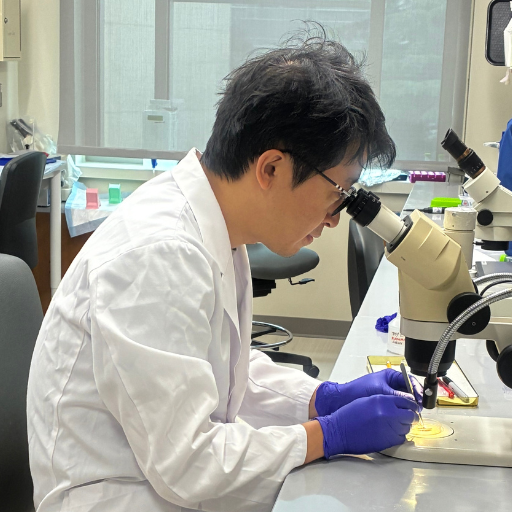Retinal Glial Changes in AMD

About the Research Project
Program
Award Type
Standard
Award Amount
$160,000
Active Dates
July 01, 2016 - July 01, 2019
Grant ID
M2016198
Acknowledgement
Goals
Age-related macular degeneration (AMD), the leading cause of blindness in people over 60 years of age, is a complex disease that involves many cells. Two cells that have been largely ignored with regard to AMD are astrocytes and Müller cells, both of which fall into the category of glial cells. Glial cells (also called “glia”) are the most abundant cells in our central nervous system, but are not themselves considered neural tissue; instead, they’re there to provide support and protection for neurons. Since these cells maintain a stable retinal environment and communicate with many cells, disruption to their normal behavior could contribute to the AMD disease process. The proposed research will investigate why glial cells exit the retina in AMD, potentially identifying novel therapeutic targets.
Summary
One area of knowledge about AMD that is severely lacking is the involvement of cells known as glia, which support retinal function. The goal of my research is to identify glial cell changes in AMD and determine how these may affect AMD progression and treatment. I have observed glial cells forming membranes both above and below the retina in AMD eyes. While many of these membranes are not observed by clinicians, they may alter the efficiency of treatments and also affect normal retinal function.
For Aim 1 of my study, I am investigating whether glial membranes are observed in areas with AMD pathology. To answer this question, I stain human retinas and choroids with markers for specific proteins to visualize glial cells and blood vessels. I then compare the location of glial membranes above and below the retina to AMD pathology observed in either the stained choroids or photographs taken of the whole eye prior to removing the retina.
I am also looking at the influence of vitreous, the gel-like liquid that separates the retina from the lens, on glial cells. Prior to dissecting the retinas, we collect the vitreous from each eye. Glial cells grown in culture are exposed to diluted vitreous samples taken from the same eyes as the stained retinas. I then analyze the movement and division of cells in response to vitreous. This will determine whether changes to the vitreous in AMD promote glia to exit the retina.
For Aim 2 of this study, I am investigating specific factors that stimulate glial cells to migrate out of the retina. Part of the vitreous samples collected from each eye will be sent to Novartis Institute for BioMedical Research, Inc., where a collaborator on the study will analyze them using SomaScan technology. The SomaScan analyzes up to 5,000 proteins at a time, allowing us to detect changes in many proteins. The vitreous from control eyes will be compared to that from eyes with AMD to determine differences associated with this disease. At the same time, we will be comparing the vitreous from retinas with no glial membranes to that from retinas with membranes. These studies will identify potential novel proteins that may stimulate cells to enter the vitreous.
The second part of Aim 2 is testing the influence of specific proteins that are elevated in AMD on glial cell migration and proliferation in culture. I put cells on a thin membrane with potential stimuli below. After 24 hours, I determine how many cells cross to the other side of the membrane. I am also looking at how these proteins affect the structure of cells and their ability to divide. I will also be testing the influence of proteins identified with our SomaScan analysis.
This study will breach a gap in knowledge regarding the role retinal glia play in AMD pathology. Our collaboration with Johanna M. Seddon, MD, ScM at Tufts provides us the unique opportunity to compare our findings in the laboratory to clinical observations. In addition, I look at human retinas and choroids from a flat perspective, which is not done by many laboratories. The collection of vitreous samples and access to SomaScan technology is also unique and will provide a wealth of data.
The research I am doing will potentially identify novel treatment targets for AMD as well as possibilities for improved treatment efficacy. Furthermore, by identifying potential roles for glial cells in AMD, I hope to increase awareness in the vision research community about the ways in which glial cells may contribute to disease. Since many of the membranes I am observing are subclinical but could interfere with treatments, the work I am doing may indicate a need for higher-resolution clinical imaging in AMD.
Related Grants
Macular Degeneration Research
How Aging of the Immune System Affects Age-Related Macular Degeneration
Active Dates
July 01, 2025 - June 30, 2028

Principal Investigator
Masayuki Hata, MD, PhD
Current Organization
Kyoto University
How Aging of the Immune System Affects Age-Related Macular Degeneration
Active Dates
July 01, 2025 - June 30, 2028

Principal Investigator
Masayuki Hata, MD, PhD
Current Organization
Kyoto University
Macular Degeneration Research
Microglia’s Roles in AMD to Inform Therapies for Vision Loss Prevention
Active Dates
July 01, 2025 - June 30, 2027

Principal Investigator
Nobuhiko Shiraki, PhD
Current Organization
Duke University School of Medicine
Microglia’s Roles in AMD to Inform Therapies for Vision Loss Prevention
Active Dates
July 01, 2025 - June 30, 2027

Principal Investigator
Nobuhiko Shiraki, PhD
Current Organization
Duke University School of Medicine
Macular Degeneration Research
The Novel Role of an Intracellular Nuclear Receptor in AMD Pathogenesis
Active Dates
July 01, 2024 - June 30, 2026

Principal Investigator
Neetu Kushwah, PhD
Current Organization
Boston Children’s Hospital
The Novel Role of an Intracellular Nuclear Receptor in AMD Pathogenesis
Active Dates
July 01, 2024 - June 30, 2026

Principal Investigator
Neetu Kushwah, PhD
Current Organization
Boston Children’s Hospital


